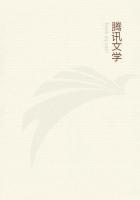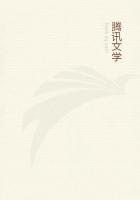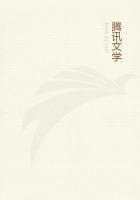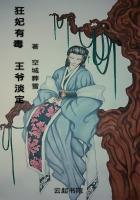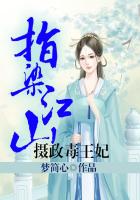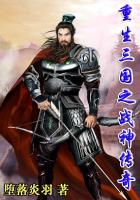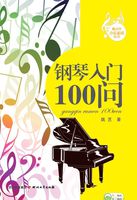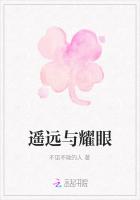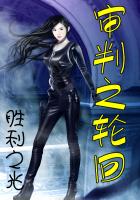I. The mucous tissue, as Virchow calls it, common in embryonic structures, seen in the vitreous humor of the adult.
To these add X, granules, of indeterminate shape and size, Y, for inorganic matters, such as the salts of bone and teeth, and Z, to stand as a symbol of the fluids, and you have the letters of what I have ventured to call the alphabet of the body.
But just as in language certain diphthongs and syllables are frequently recurring, so we have in the body certain secondary and tertiary combinations, which we meet more frequently than the solitary elements of which they are composed.
Thus A B, or a collection of cells united by simple structureless solid, is seen to be extensively employed in the body under the name of cartilage. Out of this the surfaces of the articulations and the springs of the breathing apparatus are formed. But when Nature came to the buffers of the spinal column (intervertebral disks) and the washers of the joints (semilunar fibrocartilages of the knee, etc.), she required more tenacity than common cartilage possessed. What did she do? What does man do in a similar case of need? I need hardly tell you. The mason lays his bricks in simple mortar. But the plasterer works some hair into the mortar which he is going to lay in large sheets on the walls. The children of Israel complained that they had no straw to make their bricks with, though portions of it may still be seen in the crumbling pyramid of Darshour, which they are said to have built. I visited the old house on Witch Hill in Salem a year or two ago, and there I found the walls coated with clay in which straw was abundantly mingled;--the old Judaizing witch- hangers copied the Israelites in a good many things. The Chinese and the Corsicans blend the fibres of amianthus in their pottery to give it tenacity. Now to return to Nature. To make her buffers and washers hold together in the shocks to which they would be subjected, she took common cartilage and mingled the white fibrous tissue with it, to serve the same purpose as the hair in the mortar, the straw in the bricks and in the plaster of the old wall, and the amianthus in the earthen vessels. Thus we have the combination A B C, or fibro- cartilage. Again, the bones were once only gristle or cartilage, A B. To give them solidity they were infiltrated with stone, in the form of salts of lime, an inorganic element, so that bone would be spelt out by the letters A, B, and Y.
If from these organic syllables we proceed to form organic words, we shall find that Nature employs three principal forms; namely, Vessels, Membranes, and Parenchyma, or visceral tissue. The most complex of them can be resolved into a combination of these few simple anatomical constituents.
Passing for a moment into the domain of PATHOLOGICAL ANATOMY, we find the same elements in morbid growths that we have met with in normal structures. The pus-corpuscle and the white blood-corpuscle can only be distinguished by tracing them to their origin. A frequent form of so-called malignant disease proves to be only a collection of altered epithelium-cells. Even cancer itself has no specific anatomical element, and the diagnosis of a cancerous tumor by the microscope, though tolerably sure under the eye of an expert, is based upon accidental, and not essential points,--the crowding together of the elements, the size of the cell-nuclei, and similar variable characters.
Let us turn to PHYSIOLOGY. The microscope, which has made a new science of the intimate structure of the organs, has at the same time cleared up many uncertainties concerning the mechanism of the special functions. Up to the time of the living generation of observers, Nature had kept over all her inner workshops the forbidding inscription, No Admittance! If any prying observer ventured to spy through his magnifying tubes into the mysteries of her glands and canals and fluids, she covered up her work in blinding mists and bewildering halos, as the deities of old concealed their favored heroes in the moment of danger.
Science has at length sifted the turbid light of her lenses, and blanched their delusive rainbows.
Anatomy studies the organism in space. Physiology studies it also in time. After the study of form and composition follows close that of action, and this leads us along back to the first moment of the germ, and forward to the resolution of the living frame into its lifeless elements. In this way Anatomy, or rather that branch of it which we call Histology, has become inseparably blended with the study of function. The connection between the science of life and that of intimate structure on the one hand, and composition on the other, is illustrated in the titles of two recent works of remarkable excellence,--"the Physiological Anatomy" of Todd and Bowman, and the "Physiological Chemistry" of Lehmann.
Let me briefly recapitulate a few of our acquisitions in Physiology, due in large measure to our new instruments and methods of research, and at the same time indicate the limits which form the permanent or the temporary boundaries of our knowledge. I will begin with the largest fact and with the most absolute and universally encountered limitation.
The "largest truth in Physiology" Mr. Paget considers to be "the development of ova through multiplication and division of their cells." I would state it more broadly as the agency of the cell in all living processes. It seems at present necessary to abandon the original idea of Schwann, that we can observe the building up of a cell from the simple granules of a blastema, or formative fluid. The evidence points rather towards the axiom, Omnis cellula a cellula; that is, the germ of a new cell is always derived from a preexisting cell. The doctrine of Schwann, as I remarked long ago (1844), runs parallel with the nebular theory in astronomy, and they may yet stand or fall together.

